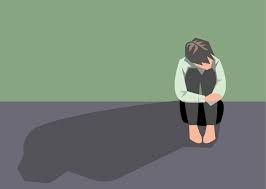Childhood trauma can have profound and lasting effects on an individual’s mental, emotional, and physical well-being. These adverse experiences can range from neglect and abuse to witnessing violence or going through a traumatic event.
However, it’s important to understand that healing from childhood trauma is possible.
This article aims to provide a comprehensive guide on how to overcome childhood trauma and build a path to healing and resilience.
Acknowledge the Trauma
The first step in overcoming childhood trauma is to acknowledge its existence. Many individuals may have repressed or denied their traumatic experiences, making it crucial to confront them honestly. Recognizing the impact of trauma is the initial step towards healing.
Seek Professional Help
Therapists, psychologists, and counselors are trained to help individuals process and heal from childhood trauma. Therapy can provide a safe and supportive environment for exploring the trauma’s effects and working through the associated emotions.
Cognitive-behavioral therapy, EMDR (Eye Movement Desensitization and Reprocessing), and trauma-focused therapies are some of the effective approaches for trauma recovery.
Build a Support Network
Connect with friends and family who can provide emotional support during your healing journey. Sharing your experiences with people you trust can alleviate the isolation that often accompanies trauma.
Support groups specifically tailored to trauma survivors can also be incredibly beneficial, as they offer a sense of community and shared understanding.
Self-Care and Mindfulness
Engage in self-care practices to manage stress and promote emotional well-being. Exercise, meditation, and deep breathing techniques can help regulate your emotions and reduce anxiety. Mindfulness practices can also be effective in staying present and managing trauma-related triggers.
Educate Yourself
Understanding the psychological and physiological impact of trauma can be empowering. Knowledge can demystify some of the symptoms and reactions you may experience, making it easier to address and manage them effectively. Books, articles, and educational resources on trauma can be valuable tools in your recovery.
Rebuild Trust
Childhood trauma can shatter an individual’s trust in people and the world. As part of the healing process, work on rebuilding trust in yourself and others. Surround yourself with supportive and trustworthy individuals who can help you develop healthier relationships.
Express Your Emotions
Repressing emotions can exacerbate the effects of trauma. It’s essential to find healthy ways to express your feelings. Journaling, art therapy, and even talking to a therapist can provide an outlet for processing and releasing pent-up emotions.
Establish Boundaries
Learning to set and maintain healthy boundaries is crucial in preventing re-victimization and preserving your emotional well-being. Recognize your limits and communicate them clearly with others.
Challenge Negative Beliefs
Childhood trauma can lead to distorted self-beliefs and perceptions. Challenge these negative beliefs with positive affirmations, self-compassion, and constructive self-talk. Self-empowerment can help you regain control over your life.
Practice Forgiveness
Forgiveness is not about excusing the actions of those who caused the trauma; it’s about freeing yourself from the burden of anger and resentment. Forgiving others can lead to emotional healing, but remember that this is a personal process and may not be possible or appropriate for everyone.
Stay Patient and Persistent
Healing from childhood trauma is not a linear process. There will be ups and downs, and some days may be more challenging than others. Be patient with yourself and stay persistent in your efforts to heal.
Avoid Self-Medicating
Turning to substances like alcohol or drugs to numb the pain of trauma is a common but harmful coping mechanism. It’s essential to avoid self-medicating and instead seek healthier ways to cope with the emotional turmoil.
Conclusion
Overcoming childhood trauma is a challenging journey, but it is possible with the right support and strategies. Acknowledge the trauma, seek professional help, build a support network, practice self-care, and educate yourself about trauma. Rebuilding trust, expressing emotions, establishing boundaries, challenging negative beliefs, practicing forgiveness, and staying patient are all essential components of healing. Remember, you are not alone on this path, and recovery is a testament to your strength and resilience. With determination and support, healing is attainable, and you can lead a fulfilling, happy life despite the past trauma.

